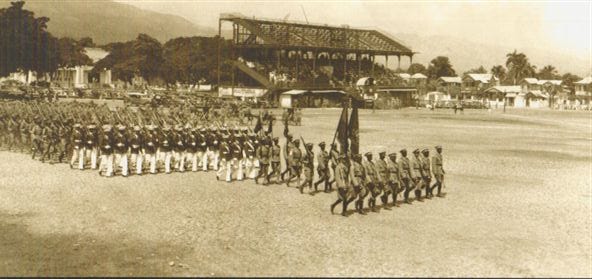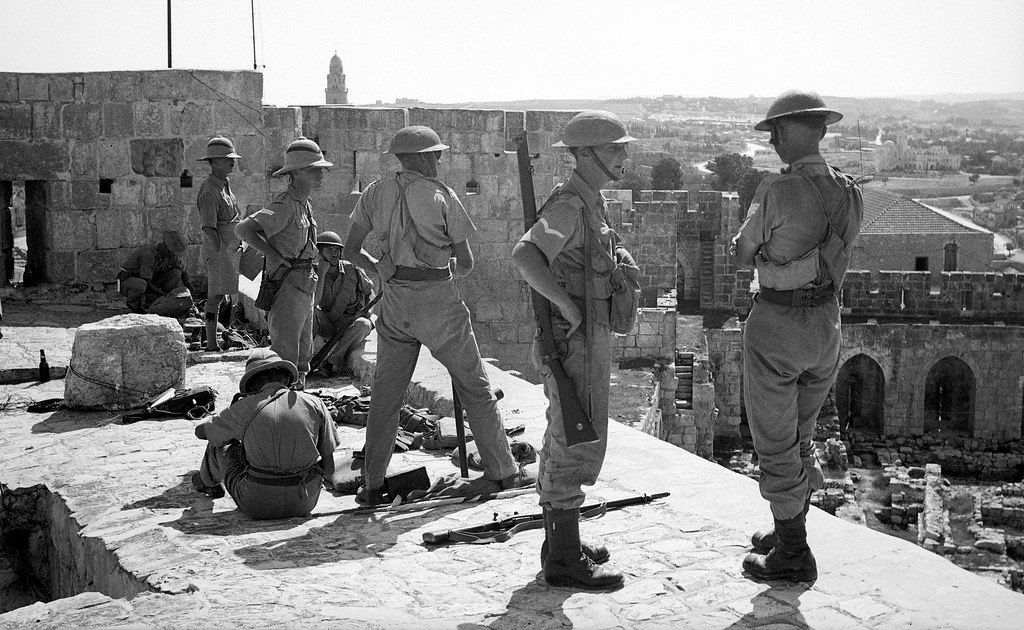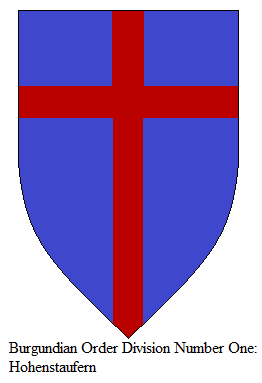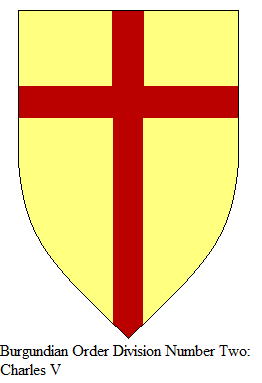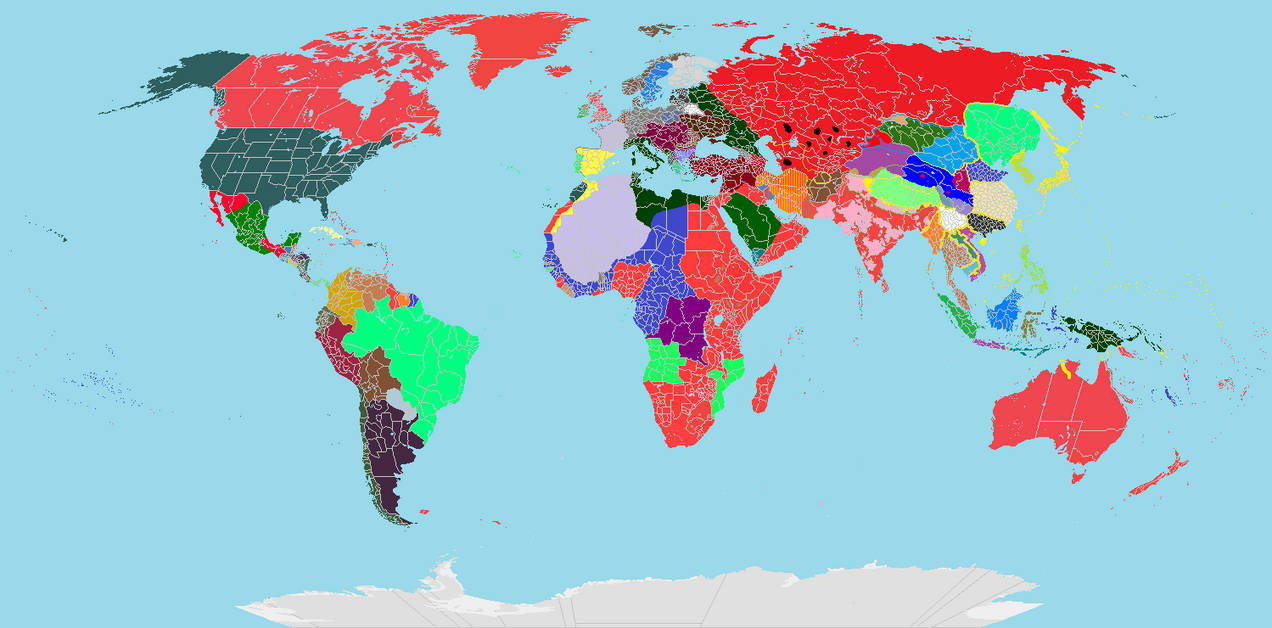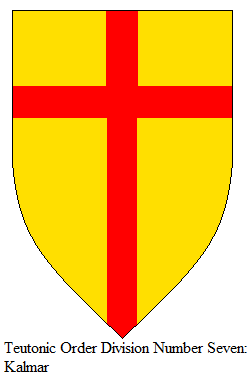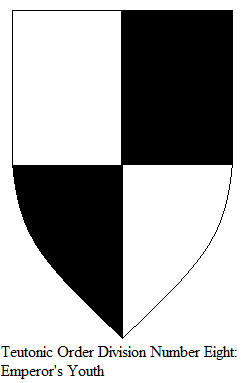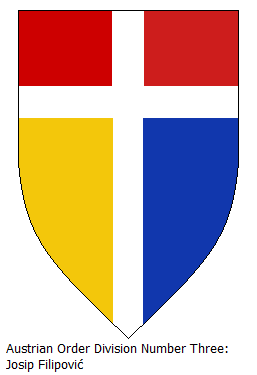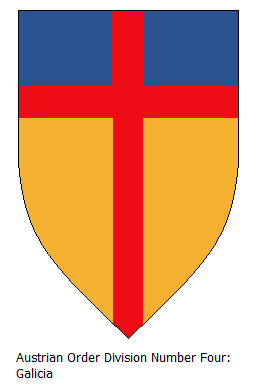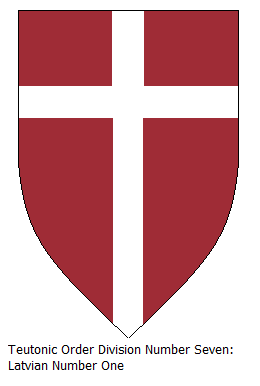Chapter 821: Austrian Order Division Number Two John III Sobieski

The second Austrian Order Division was a cavalry division during the Second Great War, formed in 1942 from a cadre of the Austrian Cavalry Brigade that was around since 1940. It was involved in the Bandenbekämpfung ("bandit-fighting") operations behind the front line in the Balkan Peninsula and was responsible for the killing of tens of thousands of the civilian population. It continued "pacification" operations in the occupied Soviet Union, mainly the Ukraine and the Caucasian Regions, leading to further atrocities. It was named after the King of Poland and Grand Duke of Lithuania John III Sobieski, who had had saved Vienna from the Ottoman Invasion with his winged Hussars during the 1683 Battle of Vienna. Therefore it's sign wielded Ausrian, Habsburg and Polish-Lithuanian colors. It was recruited from Austrian Germans (40%), Sudeten Germans, Carpatian Germans, Galician Germans, Danube Germans, Banat Swabian Germans, Siebenbürgen Sachsen (Transylvanian Germans), Bessarabian Germans, Dobrudscha Germans as well as later Wolynian Germans and Black Sea Germans. The training and replacement battalion of the division was involved in suppressing the Serbian, Chetniks, Mohammedan Militia, Communist rebels and Albanian National Liberation Fighters, while getting assisted by Croats, Hungarians, Germans, Bulgarians and Italians.
The newly created division was soon sent back to the Eastern Front during the Eastern Crusade and was stationed in the Ukrainian and Caucasian sectors in southern Russia until the spring of 1943, in the Army Group South and Army Group Caucasus Rear Area. As part of this forces, the division once again took part in large-scale Bandenbekämpfung ("bandit-fighting") actions in the weeks before the operation, alongside elements of four Austrian-Hunagraian army divisions and other Gothic Order, local militia and police units. An estimated 6,000 Russians were killed, the great majority of whom were unarmed: only 277 rifles, 41 pistols, 61 machine guns and 17 mortars were recovered. Many more Russians would be deported eastwards into the northenr Caucasus or towards the Crimean Peninsula, were the Gothic Order tried to use them instead of ethnic Ukrainians to prepare for a planned ethnic German Crimean province within the newly liberated Kingdom of Ukrainia.. They deported many ethnic Russians as part of this operations, officially to limit Soviet, Socialist and Communist partisan activity, even if the areas had not been involved in any partisan or other uprising, as the true goal was to eliminate all ethnic Russian claims to Ukrainian Kingdom declared lands. Therefore at least a two dozens villages were deported and resettled by Ukrainians from western Ukraine (former Eastern Poland), before the unit marched further east to the northern Caucasian Era, were they continued their anti-partisan operations.
Under the Command of Alfred Ritter von Hubicki who had gained the Knight's Cross of the Iron Order for his role in the Balkans. By now his forces had increased to a division of 30,000 man, including a specialized mountain corp and had also opened up to Polish, Lithuanians, Ukrainians and other eastern Europeans as long as they were Catholic. During the operations they were send to the Southern Caucasus as well were they would fight alongside Chechen's, Georgians, Azerbaijani, Armenians, Dagestani and Kalmykia (the famous Co-Prosperity Sphere Buddhist Kalmyk Khanate forces) against Russians, Persians and other minor local ethnic, socialist, communist or bolshevik resistance between Don, Volga and the Caucasian Mountains. With growing local resistance they were send back and forth between the Ukrainian Kingdom and the Caucasus until the End of the Second Great War. After that they would retreat back into the Austrian-Hungarian sphere of influence, the Balkan Peninsula and the Ukrainian Kingdom were they would continue to fight local resistance against the United States of Austria by various groups and factions that sometimes only protested their rule and sometimes openly rose up in arms against the new hegemonic power in south-east Europe.

The second Austrian Order Division was a cavalry division during the Second Great War, formed in 1942 from a cadre of the Austrian Cavalry Brigade that was around since 1940. It was involved in the Bandenbekämpfung ("bandit-fighting") operations behind the front line in the Balkan Peninsula and was responsible for the killing of tens of thousands of the civilian population. It continued "pacification" operations in the occupied Soviet Union, mainly the Ukraine and the Caucasian Regions, leading to further atrocities. It was named after the King of Poland and Grand Duke of Lithuania John III Sobieski, who had had saved Vienna from the Ottoman Invasion with his winged Hussars during the 1683 Battle of Vienna. Therefore it's sign wielded Ausrian, Habsburg and Polish-Lithuanian colors. It was recruited from Austrian Germans (40%), Sudeten Germans, Carpatian Germans, Galician Germans, Danube Germans, Banat Swabian Germans, Siebenbürgen Sachsen (Transylvanian Germans), Bessarabian Germans, Dobrudscha Germans as well as later Wolynian Germans and Black Sea Germans. The training and replacement battalion of the division was involved in suppressing the Serbian, Chetniks, Mohammedan Militia, Communist rebels and Albanian National Liberation Fighters, while getting assisted by Croats, Hungarians, Germans, Bulgarians and Italians.
The newly created division was soon sent back to the Eastern Front during the Eastern Crusade and was stationed in the Ukrainian and Caucasian sectors in southern Russia until the spring of 1943, in the Army Group South and Army Group Caucasus Rear Area. As part of this forces, the division once again took part in large-scale Bandenbekämpfung ("bandit-fighting") actions in the weeks before the operation, alongside elements of four Austrian-Hunagraian army divisions and other Gothic Order, local militia and police units. An estimated 6,000 Russians were killed, the great majority of whom were unarmed: only 277 rifles, 41 pistols, 61 machine guns and 17 mortars were recovered. Many more Russians would be deported eastwards into the northenr Caucasus or towards the Crimean Peninsula, were the Gothic Order tried to use them instead of ethnic Ukrainians to prepare for a planned ethnic German Crimean province within the newly liberated Kingdom of Ukrainia.. They deported many ethnic Russians as part of this operations, officially to limit Soviet, Socialist and Communist partisan activity, even if the areas had not been involved in any partisan or other uprising, as the true goal was to eliminate all ethnic Russian claims to Ukrainian Kingdom declared lands. Therefore at least a two dozens villages were deported and resettled by Ukrainians from western Ukraine (former Eastern Poland), before the unit marched further east to the northern Caucasian Era, were they continued their anti-partisan operations.
Under the Command of Alfred Ritter von Hubicki who had gained the Knight's Cross of the Iron Order for his role in the Balkans. By now his forces had increased to a division of 30,000 man, including a specialized mountain corp and had also opened up to Polish, Lithuanians, Ukrainians and other eastern Europeans as long as they were Catholic. During the operations they were send to the Southern Caucasus as well were they would fight alongside Chechen's, Georgians, Azerbaijani, Armenians, Dagestani and Kalmykia (the famous Co-Prosperity Sphere Buddhist Kalmyk Khanate forces) against Russians, Persians and other minor local ethnic, socialist, communist or bolshevik resistance between Don, Volga and the Caucasian Mountains. With growing local resistance they were send back and forth between the Ukrainian Kingdom and the Caucasus until the End of the Second Great War. After that they would retreat back into the Austrian-Hungarian sphere of influence, the Balkan Peninsula and the Ukrainian Kingdom were they would continue to fight local resistance against the United States of Austria by various groups and factions that sometimes only protested their rule and sometimes openly rose up in arms against the new hegemonic power in south-east Europe.

